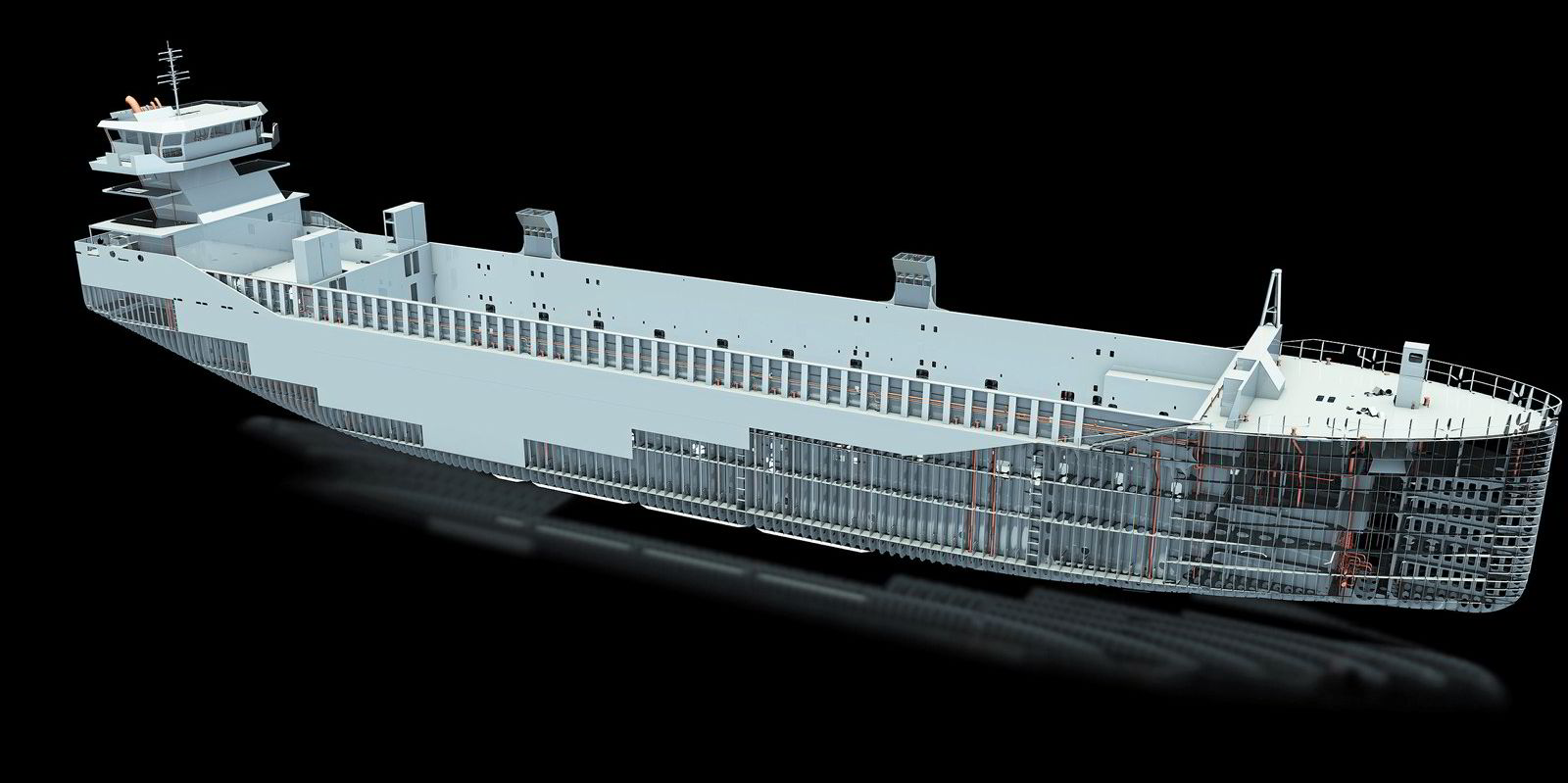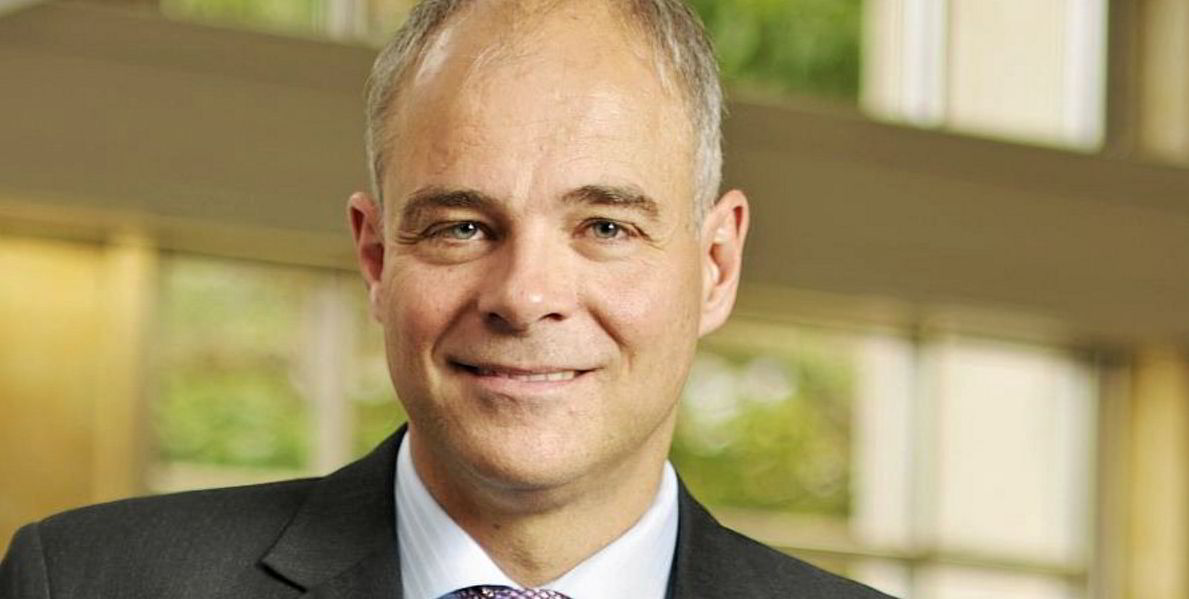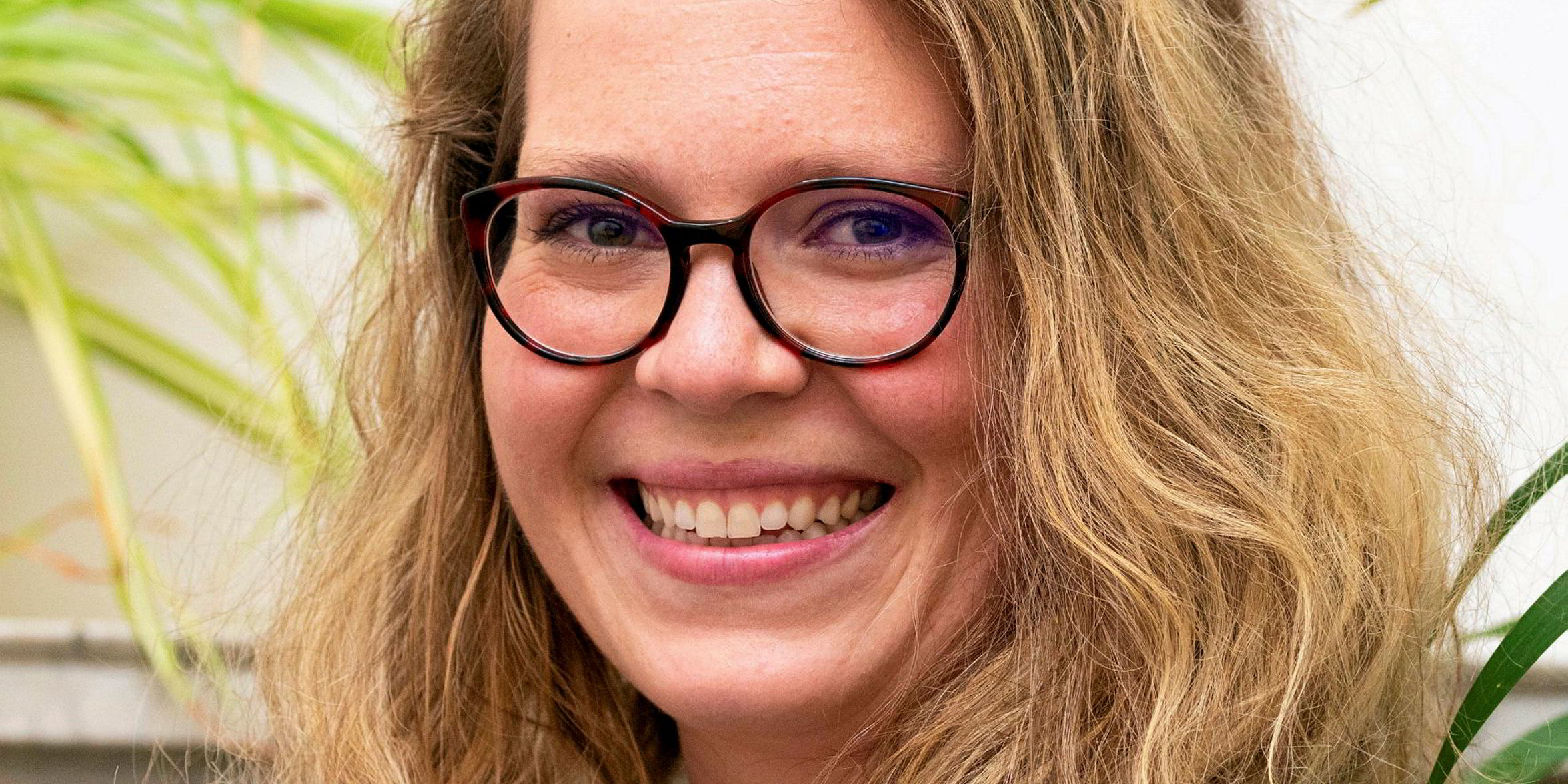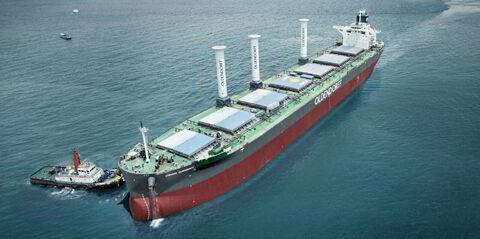If shipowners are going to be able to operate zero-emissions vessels by 2030 that have a commercial life of at least 20 years, shipyards will quickly need to start building them.
But getting designs from the drawing board and onto the water is no easy task.
Shipyards have begun to develop designs for vessels that will be powered by low-carbon or zero-carbon fuels, but major Asian shipbuilders say the processes needed to create ships that can meet the International Maritime Organization emission goals will require a multi-faceted effort.
No shipyard will be able to build zero-carbon emission ships by its own efforts alone, they say.
“Maritime decarbonisation is an inter-industry issue and is beyond the shipbuilding and shipping industries,” a spokesperson for Korea Shipbuilding & Offshore Engineering (KSOE) tells TW+. “It will be difficult to make significant progress in a short period of time.”
The holding company for Hyundai Heavy Industries, Hyundai Samho Heavy Industries and Hyundai Mipo Dockyard says efforts to develop vessels fitted with dual-fuel engines that can burn hydrogen, methanol or ammonia will mean working closely with the licensors of those new engines.
“The shipyard cannot proceed with the development of ships that use alternative fuels alone,” KSOE says.
“Accessibility and price stability of the marine carbon-neutral fuel must precede the supply of zero-carbon-fuel vessels.”
Samsung Heavy Industries says the key to building carbon-neutral vessels is close collaboration with shipowners, regulatory bodies, fuel suppliers and key equipment manufacturers.
Efforts to pull together these stakeholders have begun. The Maritime Technologies Forum, launched in April, combines leading flag states and classification societies to provide technical and regulatory research, expertise and leadership to assist with the technological challenges.
Founding members of the forum are ABS, DNV, the Maritime Bureau of Japan’s Ministry of Land, Infrastructure, Transport & Tourism, Lloyd’s Register, ClassNK, the Norwegian Maritime Authority and the UK Maritime & Coastguard Agency.
“The regulatory framework for the development and use of new technology must remain up to date to ensure advances assure the safety of people, assets and the environment,” the group says.
It is an issue KSOE is concerned with — that the preparation of regulation is a necessary early-stage precondition for the development and construction of carbon-free vessels.
Chicken-and-egg dilemma
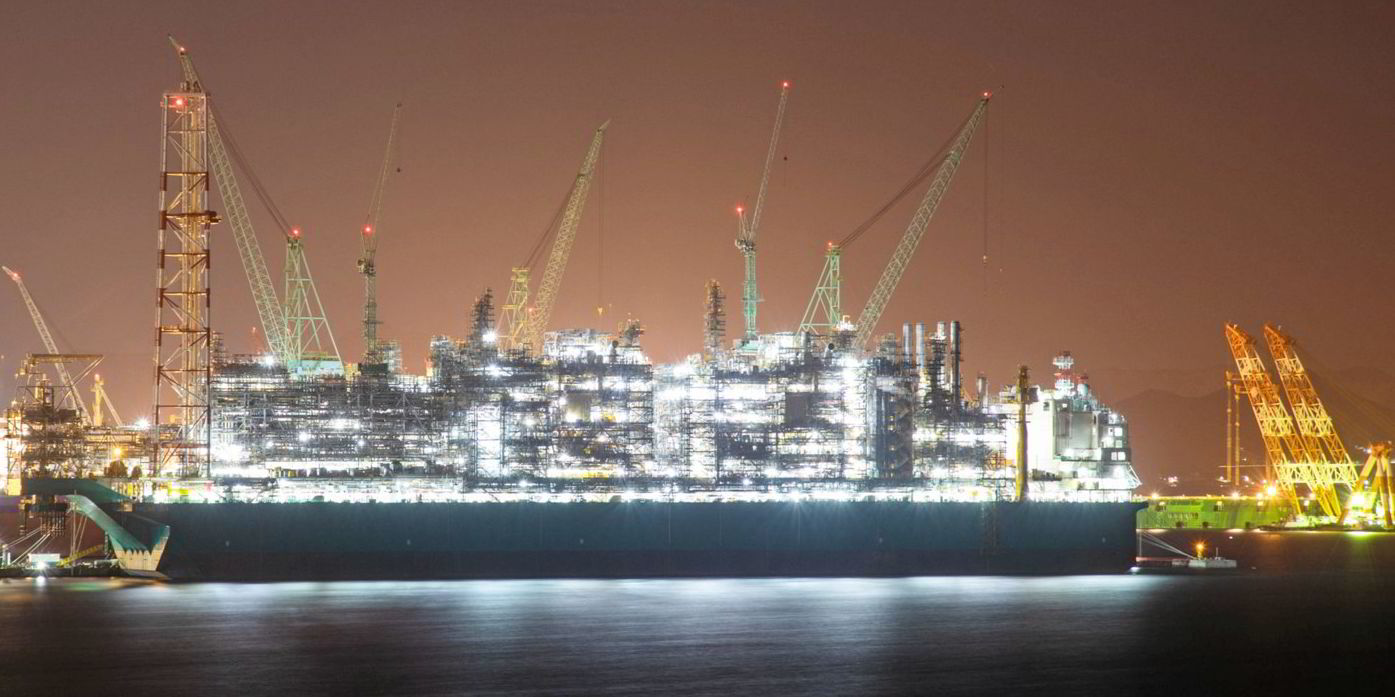
“In the case of ammonia-propulsion vessels, design standards shall [have to] be established to cope with the toxicity of ammonia, which should involve active preparation by relevant parties,” the yard group argues.
“It’s a chicken-and-egg dilemma,” adds Japanese trading house Itochu, which took the lead in forming an integrated joint partnership last year with ClassNK, Nihon Shipyard (the venture between Imabari Shipbuilding and Japan Marine United), MAN Energy Solutions, Mitsui E&S Machinery and Itochu Enex to develop ammonia-fuelled ships.
The pilot project has set a target to build 10 bulkers (either kamsarmax or capesize) or VLCCs or MR tankers, with the aim of delivering the first ship in 2025. The target delivery date is reliant on the world’s first ammonia-fuelled engine being available from 2024.
As effective safety regulations for the use of ammonia as a fuel on board ships are not in force yet, Itochu and its partners are looking to obtain approval from the International Convention for the Safety of Life at Sea as soon as possible.
KSOE recently signed a memorandum of understanding with the Korean Register of Shipping to develop the first international standard for hydrogen-powered ships. The two plan to submit a draft regulation to the IMO by 2022.
How much progress has been made on carbon-neutral vessels?
KSOE has already developed dual-fuel propulsion systems using LNG, LPG, ethanol and methanol. But to respond further to the decarbonisation challenge, it is working to improve the competitiveness of LNG dual-fuel propulsion systems, as well as systems that can also burn alternative fuels.
KSOE says it has already obtained approval in principle (AIP) from the Korean Register for an ammonia-driven VLCC and an ammonia-ready LPG carrier.
The company is also working on energy-saving devices that can be applied as options to all types of vessels.
Taskforce formed
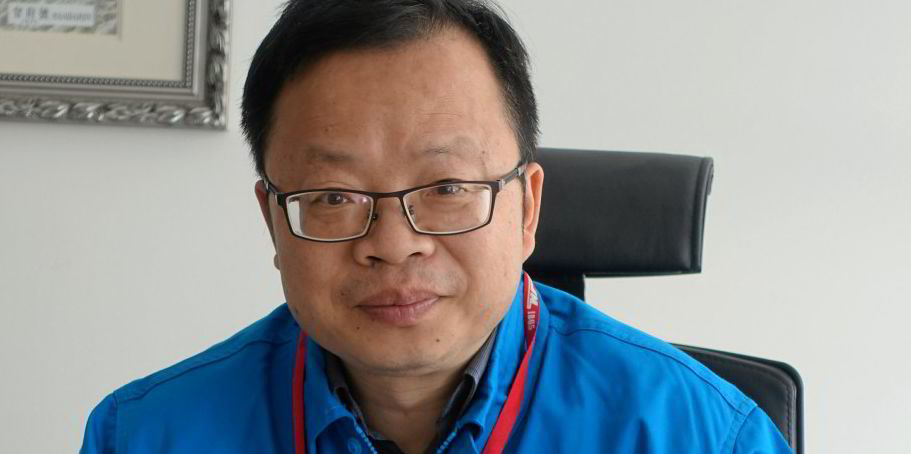
An example is a wind-assisted propulsion system for which KSOE says it has received an AIP from DNV this year. It is able to reduce emissions and fuel burn by more than 6%. A joint project with SK Shipping is planned, to fit the 50-metre tall and 20-metre wide wind sails on both sides of ships’ decks.
In China, Jiangnan Shipyard says it is capitalising on its experience of building fully refrigerated and pressurised LPG ships, to come up with a blueprint for a 40,000-cbm LPG carrier that will run on green ammonia. It is working with Wartsila on the fuel supply system and has approval from Lloyd’s Register.
Hu Keyi, chief of corporate technology at Jiangnan, says the yard is prioritising ammonia propulsion over other alternative fuels due to its long record in constructing LPG ships.
“Jiangnan has rich experience in designing and fabricating the containment system for ammonia, which is one of the major cargoes in medium-size type A and type C gas carriers,” he says. “We have formed a taskforce team in our Jiangnan Institute of Technology, and it has been working on the ships for more than a year.”
The state-owned shipbuilder says it is talking to some shipowners about the ammonia-fuelled midsize newbuildings and hopes to deliver the first of the vessels in 2023, when their main engine is made available.
Jiangnan has also come up with a design for an ammonia-fuelled 15,000-teu containership. “The ammonia fuel containment system will be designed to a cell shape so that it is fully compatible with the container cells,” says Hu.
But the yard shares the concerns of its competitors about the availability of ammonia-fuel engines and a supply infrastructure, not to mention the toxicity challenges it poses.
Japanese coastal shipbuilders Koa Sangyo and Imura Shipbuilding are probably the world’s first shipyards to have received zero-emission vessel contracts.
Each yard was contracted by domestic owner Asahi Tanker to build 499-gt electrically powered tankers for delivery in 2022 and 2023 respectively.
Kawasaki Heavy Industries is providing the propulsion system, including a 3,480-kWh lithium battery to power the ships.
The newbuilding project is part of the e5 Lab project involving companies from the Japanese maritime cluster interested in building zero-emission vessels.
The e5 consortium comprises Asahi Tanker, which will operate the tankers in Tokyo Bay, Idemitsu Kosan, Exeno Yamamizu Corp, Mitsui OSK Lines, Tokio Marine & Nichido Fire Insurance, Tepco and Mitsubishi Corp.
MOL has ordered a bulker from Oshima Shipbuilding that will feature a hard-sail wind-power system, capable of cutting emissions by 5% on the Japan-Australia route, as part of its Wind Challenger project.
The ship is due to be delivered in 2022. MOL says it is looking at designs for a capesize bulker, an LNG carrier equipped with two sails and a four-sail VLCC to follow on from the first 100,000-dwt coal carrier.
Initial steps to build the ships of the future are being made, but a lot still needs to be done.
